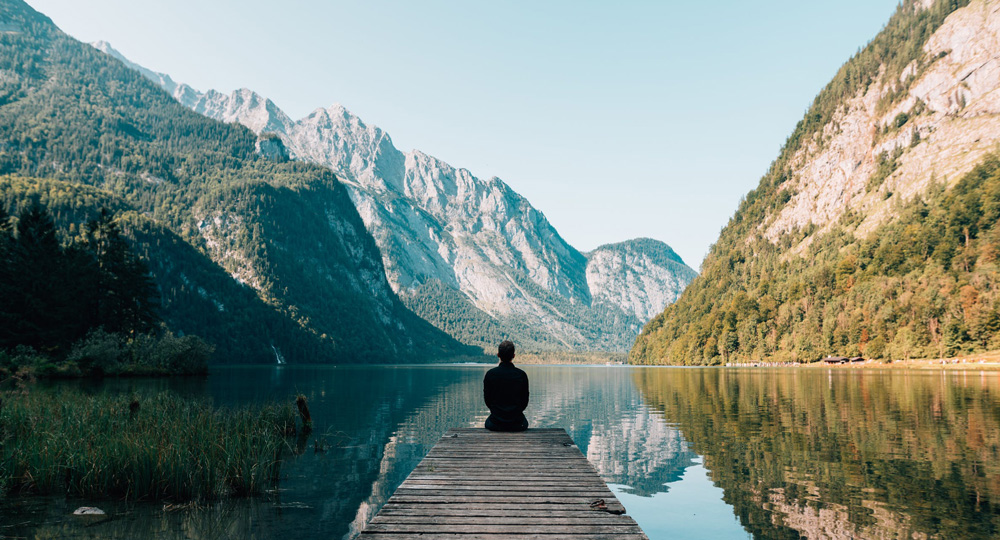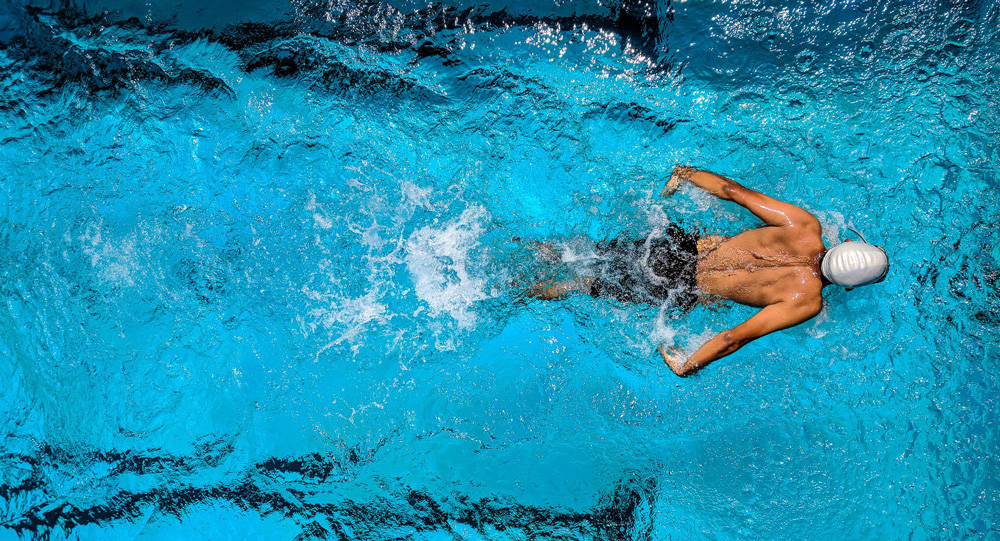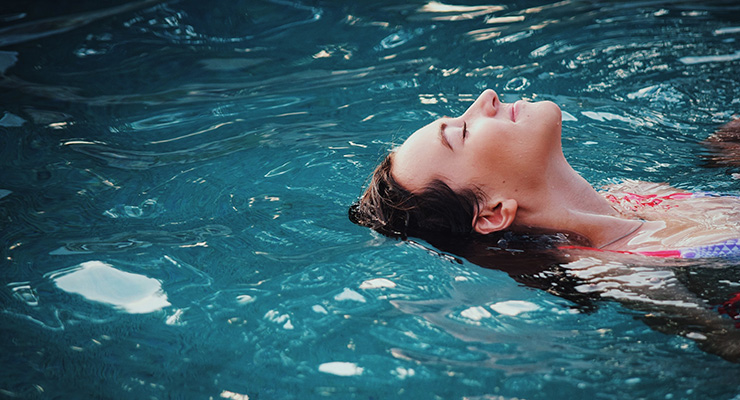Estimated reading time: 9 minutes
Water therapy is an ancient healing practice that has been used for centuries to treat various stresses and ailments; here’s how you can leverage it’s power
—
Water therapy is one of the oldest and most natural ways to heal the mind, body and soul. It has been well-known for centuries in many cultures for its healing properties. There are many different ways to incorporate water therapy into your life, many of which you may have never considered.
Healing Properties of Water
Water is the primary source of life. Our bodies are made up of 60-70 % water and we need it to survive. Water therapy is an age-old practice to improve health on many levels. Here are a few of them:
Keeps You Slim
Water is a powerful element for keeping your body slim and toned. Staying fully hydrated can help with weight loss or maintenance by:
- Reducing water retention (the main reason people feel bloated)
- Boosting your metabolism (which leads to burning more calories)
- Acting as a natural appetite suppressant (which deters you from overeating)
- Helping to flush out toxins and impurities (which can imped the body’s functioning which in turn can lead to weight gain)
Drinking plenty of water is one of the best things you can do for your health and wellbeing.

Nourishes the Skin
One of the essential benefits of water therapy is that it helps keep the skin hydrated and nourished. It can improve the complexion of your skin and make it more elastic. As it flushes out toxins, drinking water throughout the day will help improve your health and appearance.
You can also use a water compress on your skin. Soak a soft cloth in warm water and apply it to your face for five minutes, or take baths or showers with mineral-rich water. Do this every day, and you should see a difference in the appearance of your skin within a few weeks.
Water therapy will help keep your complexion healthy and radiant, whether you have dry skin, oily skin, or combination skin.
Increases Muscle and Joint Flexibility
Water therapy can improve your circulation and increase your range of motion and flexibility. Warm water helps to relax tense or spasmed muscles. If you have arthritis, hydrotherapy (exercises done in water) can be an excellent way to reduce pain and stiffness. It provides resistance as you move, helping to stretch and tone your muscles. It can also help relieve joint pain by giving support and buoyancy.
Prevents Health Conditions
Water therapy can prevent and improve many different health conditions. These include, but are not limited to, hypertension, obesity, diabetes, metabolic syndrome, cardiovascular disease, stroke, cancer, kidney stones, and osteoporosis. It can also help with constipation and other digestive issues. The benefits of water therapy are far-reaching. Not only can it help prevent chronic conditions, but it can also treat acute conditions such as headaches, muscle pain, and fatigue.
Boosts Energy Levels
Energy is central to our bodies — it helps us think clearly, fuels our muscles and gives us the strength we need to power through our days. Water therapy can improve energy levels in several ways:
- It helps to improve circulation and gets oxygen flowing to your cells and tissues
- It can help fight off fatigue and help you feel more energized throughout the day
- The mere contact with warm or cool water can shake up your emotional state, cheering you up and boosting your energy
Slows Aging
Water therapy is proven to slow the aging process in several ways, including:
- Keeping your skin hydrated and elastic, which reduces the appearance of fine lines and wrinkles
- Keeping your joints lubricated, whichs prevents pain and stiffness
- Improving circulation, which enhances your range of motion and functioning of your organs
- Eliminating toxins from your body, which would otherwise attack your cells and compromise your autoimmune system
Benefits of Water for Your Soul
There are many benefits of water therapy for your soul, including:
- Calming your nervous system, which helps you connect with and find peace within yourself.
- Enlivening your spiritual being, which is elevated by the presence of water, whether you’re observing it or immersed in it.
Reduces Stress
Water therapy is a powerful tool to reduce stress levels and promote relaxation. When stressed, our bodies tend to tighten up, which leads to pain and tension headaches. Adding water therapy into your life can help relax both body and mind, leading to less stress overall. The soothing effect of flowing water promotes calmness. Even a 20-minute bath will lower levels of cortisol, a hormone associated with increased stress and anxiety.
Lifts Your Spirit
Being in water can release endorphins, which have mood-boosting effects. In addition, the rhythmic movement of water can help to soothe and relax you, inviting more joy and lightness into your life.
Enhances Creativity
When you are in or around water, your body and mind are relaxed, which allows you to think more expansively and creatively. It’s no surprise that artists flock to the oceans, lakes or rivers to seek inspiration for their work.
Connects You with Nature.
In water environments, it’s easy to let go of the hustle and bustle of everyday life and focus on the beauty of nature instead. Immersion in or even observing water can also remind you of the interconnectedness of all things and how we are all a part of the natural world.

Best Ways to Enjoy Water Therapy
Here are some of the best ways to use water therapy:
Hot Tub Experience
If you’re looking to add water therapy to your life but don’t have a pool or hot tub, there are other options. You can try visiting a local spa or gym where water treatments are available, or even just taking a long bath home (see below). If you ever have occasion to treat yourself to natural hot springs, it’s an incredible healing experience. If you do have access to a hot tub, however, here are some tips for getting the most out of it:
- Ensure the water temperature is comfortable for you — not too hot or too cold (a temperature of 102-104 degrees F is typical, but adjust to your liking)
- Add some aromatherapy products to infuse the water and steam with beautiful scents and oils to create an even more relaxing atmosphere
- Spend at least 20 minutes in the tub to give your body and mind ample time to unwind and calm
Of course, if you have any health concerns, consult with your doctor before using a hot tub.
Note: If you’re considering water therapy options for your home, visit my website ByRossi for information and credible reviews of hot tubs, pools and more.
Bathtub Meditation
You can use your bathtub if you don’t have access to a pool or hot tub. Fill it with warm water and add some soothing essential oils. Light a few candles if you like and dim the lights. Then, sit in the tub and allow the water to relax your muscles. Close your eyes, focus on your breath and slip into a blissful meditative state.
Aqua Sports
Water sports are an excellent way to ease stress and anxiety while promoting physical activity and health:
- Swimming is a perfect option for those who with to avoid high-impact activities
- Water aerobics is both fun and provides a gentle, full-body workout for people of all fitness levels
- Try performing arm circles and leg lifts in water; these exercises are great for improving range of motion and flexibility
- On-water sports such as kayaking or standup paddleboarding allow you to take in gorgeous, inspiring scenery and enjoy the immersion in nature while also getting exercise
- Surfing provides a deep connection to water and a unique combination of zen and high-octane action for extreme sports lovers
- Fishing is an easily accessible activity, which is why it’s so popular, that you can easily do from a boat, dock, or shoreline

Cold Shower for Your Power
Cold water therapy has been practiced for centuries, and more recently popularized by the Dutch extremist Wim Hof. But you can reap the benefits at home with a simple practice of cold showers. Cold water can improve circulation, ease muscle pain and even boost your immune system, while also clearing your mind and elevating your mood. If you’re not used to taking cold showers, start slowly by gradually lowering your water temperature until you’re comfortable with the colder temperature.
Foot Work
Warm foot baths are great for promoting relaxation and can help ease pain in the feet and lower legs. Add Epsom salts, essential oils, or herbs to deepen the benefits.
Natural Bodies of Water
There’s something about the sound of waves crashing against the shore, or waterfalls cascading down rocks, that can instantly calm and relax us. There are many different ways to soak in the beauty of water:
- Spend time by the ocean: The movement of waves is incredibly soothing and almost immediately reduces stress levels. Take a walk along the beach, go for a swim, or simply sit and relax while taking in the natural beauty and nourishing salt air
- Visit a lake or river: Fresh water can be equally therapeutic, and often creates a more intimate experience than the sea. Spend some time fishing, canoeing, or kayaking. Wade in a stream and feel the flowing water massage your feet and legs. Or simply find a quiet spot to sit and enjoy the peaceful surroundings.
If you don’t live near the water, bring the water to you! Place a small fountain in your home or office and listen to the sound of the water flowing whenever you need a break. Add some plants to your space — the very act of watering them provides an interaction with water and connection to its life-giving properties. Further, plants help purify the air around you and create a more peaceful environment.
Whatever way works for you, bring more water into your life and you’re sure to bring more health, calm and vibrancy as well.
You may also enjoy reading Blue Mind: Our Inner Connection to Water, by Wallace Nichols.
